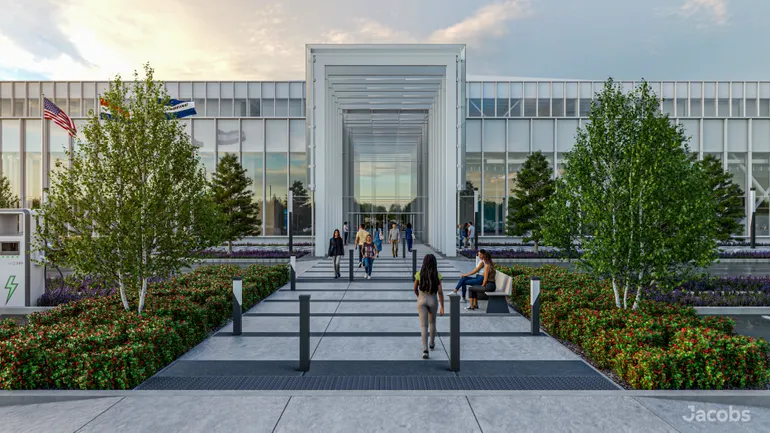“Leadership is unlocking people’s potential to become better.”
— Bill Bradley
THE ART OF LEADERSHIP
Unlock Potential
Bradley’s Playbook Shows Leaders How To Grow Teams Through Trust, Vision, And Hard Practice
The former All-Star reminds that leadership begins courtside, where a captain’s nod jolts reserves upright. Progress is kinetic, converting raw ability into rhythm through deliberate and repetitive practice. Unlocking potential demands a vision that sees beyond the scoreboard, spotting subtler statistics, courage shown, questions asked, and mistakes replayed until muscle memory turns fragile moments into fluent play.
Yet he cautions that access to growth is not granted through slogans. It arrives when leaders share playbooks, invite criticism during film sessions, and accept that teaching slows the drill today to speed the break tomorrow. Authority, once distributed, multiplies; a bench empowered to improvise reads opportunities faster than voice barking across timeout huddles.
Finally, results require accountability tempered with patience. Track small gains, extra passes made, defensive slides finished, then celebrate publicly. Each acknowledgment cements culture, turning intangible encouragement into observable momentum. Over time, the roster expects improvement, the way lungs expect air. At that point, a leader merely maintains the atmosphere, and the team’s altitude climbs steadily almost automatically.
Identify hidden talent, share a skill, track improvement, and publicly celebrate progress before day’s end today.
Get Matched With the Best HRIS/ATS Software, for Free!
Does researching HR Systems feel like a second job?
The old way meant hours of demos, irrelevant product suggestions, getting bombarded with cold emails and sales calls.
But there’s a better way.
With SelectSoftware Reviews, spend 15 minutes with an HR software expert and get 2–3 vendor recommendations tailored to your unique needs—no sales pitches, no demos.
SSR’s free HR software matching service helps you cut through the noise and focus only on solutions that truly fit your team’s needs. No guesswork. No fluff. Just insights from real HR experts.
Why HR teams trust SSR:
✅ 100% free service with no sales pressure
✅ 2–3 tailored recommendations from 1,000+ vetted options
✅ Rated 4.9/5 by HR teams and trusted by 15,000+ companies
Skip the old way—find your right HRIS/ATS in a new way, for free!
COMMERCIAL CONSTRUCTION
Boeing’s $1.8B St. Louis Boom Begins
Jacobs breaks ground on Boeing’s massive defense manufacturing campus expansion in Missouri.
Boeing quietly kicked off construction this week on a 1.1‑million‑square‑foot expansion of its historic St. Louis campus, tapping engineering giant Jacobs to shepherd the $1.8 billion project from design through environmental approvals. The fast‑tracked work cleared federal review in just eight months, allowing crews to begin selective demolition even as final drawings are refined. Company leaders say the build‑out will anchor next‑generation fighter production and add thousands of high‑skill jobs.
Phase one replaces aging hangars with digitally enabled assembly halls featuring autonomous material handling and modular clean rooms for classified systems. Future phases through 2030 will introduce an advanced post-assembly operations center and integrate mass-timber office wings, targeting LEED Platinum certification. Jacobs executives note that the hybrid steel-and-timber approach could cut embodied carbon by 40 percent while trimming schedules through off-site construction.
State leaders call the expansion a regional catalyst, backing grants for vocational training and planning a light-rail spur to connect the site with downtown, Lambert International Airport, and the ag-tech district.
INFRASTRUCTURE INDUSTRY
Lake Michigan Lifeline Pipeline Breaks Ground
Illinois Suburbs Start $1.4 Billion, Sixty‑Mile Lake Michigan Regional Water Pipeline Project.
Backhoes clattered Monday beside Chicago’s Durkin Park pumping station as officials plunged gold shovels into sand, launching the Grand Prairie Water Commission’s Lake Michigan pipeline. The $1.4‑billion project will push fresh lake water 60 miles to Joliet, Romeoville, Minooka, Channahon, Shorewood, and Crest Hill, communities long facing aquifer depletion. Groundbreaking occurred one year after the final permits were obtained.
Initial crews will tunnel a 66‑inch main beneath rail lines and expressways before trenching westward through farmland. Twin booster stations in Summit and Lemont will beat summer demand surges, while three elevated tanks buffer pressure swings. Contractors promise union labor and 30 percent awards to minority‑owned firms.
Funding blends sales‑tax pledges, low‑interest state revolving‑fund loans, and a pending federal infrastructure grant expected in August. With groundwater dropping three feet annually, mayors insist the pipeline is essential to keep industry and housing growth viable. Complete and secure water deliveries are scheduled for May 2030, but residents will track progress through an online dashboard launching next month.
RESIDENTIAL RESEARCH
Plunging Lumber Prices Spark Builder Buzz
June Lumber Slump Cuts Home Frame Costs, Ignites Nationwide Construction Optimism Wave
Framing lumber composite prices slid to $432 per thousand board feet Friday, the lowest since February, according to NAHB data released June 9. The 1.4 % weekly drop ends a month‑long plateau and widens the material’s four‑week decline to 4.8 %, offering the first real cost relief for single‑family builders.
Production builders in Arizona, Texas, and the Carolinas told analysts they will accelerate stalled starts within two weeks because truss packages quoted this morning landed 7‑10 % cheaper than April. Phoenix‑based DesertSun Homes reopened a shuttered framing line, rehiring 45 carpenters, while Raleigh’s OakLeaf Communities says its two‑story model now pencils out $7,800 under budget.
Suppliers urge caution, noting futures remain 18 % above last year and delivery backlogs are uneven in storm‑hit Gulf ports. Yet trade desks say mills are quietly discounting extra volume ahead of expected Canadian tariff talks, creating a rare summer buying window. If softness persists through July, economists expect average new‑home prices to further ease by early autumn.
TOOLBOX TALK
The Importance of Proper Storage of Gasoline on Construction Sites
Introduction
Good morning, Team! Today’s toolbox talk emphasizes the importance of storing gasoline properly. Gasoline is highly flammable and must be stored safely to prevent fires or explosions.
Why It Matters
Improper gasoline storage poses a significant risk of severe fires, explosions, and hazardous vapor exposure, potentially leading to severe injuries or fatalities.
Strategies for Proper Gasoline Storage
Use Approved Containers:
Always store gasoline in properly labeled, approved safety cans.
Store in Safe Locations:
Keep containers outdoors or in well-ventilated, designated flammable storage cabinets.
Maintain Clear Areas:
Store gasoline away from heat sources, sparks, electrical equipment, and ignition sources.
Regular Inspections:
Check containers and storage areas regularly for leaks, spills, or damage to containers.
Limit Quantities:
Store only necessary quantities of gasoline to minimize risk.
Discussion Questions
Have you experienced issues or near misses related to gasoline storage?
How can we improve our gasoline storage practices?
Conclusion
Proper storage of gasoline prevents dangerous incidents. Always use safe containers, store correctly, and inspect regularly.
Store safely to prevent fires!










